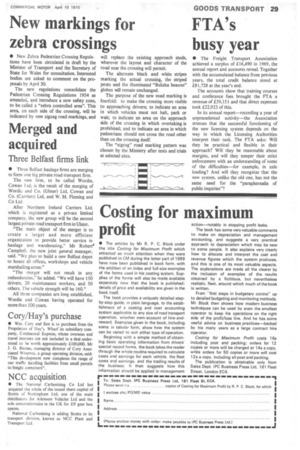New markings for FTA's zebra crossings busy year
Page 31

If you've noticed an error in this article please click here to report it so we can fix it.
• New Zebra Pedestrian Crossing Regulations have been circulated in draft by the Minister of Transport and the Secretary of State for Wales for consultation. Interested bodies are asked to comment on the proposals by April 30.
The new regulations consolidate the Pedestrian Crossing Regulations 1954 as amended, and introduce a new safety zone, to be called a "zebra controlled area". This area, on each side of the crossing, will be indicated by new zigzag road markings, and will replace the existing approach studs, wherever the layout and character of the road near the crossing will permit.
The alternate black and white stripes marking the actual crossing, the striped posts and the illuminated "Belisha beacon" globes will remain unchanged.
The purpose of the new road marking is fourfold: to make the crossing more visible to approaching drivers; to indicate an area in which vehicles must not halt, park or wait; to indicate an area on the approach side of the crossing in which overtaking is prohibited; and to indicate an area in which pedestrians should not cross the road other than on the crossing itself.
The "zigzag" road marking pattern was chosen by the Ministry after tests and trials at selected sites. • The Freight Transport Association achieved a surplus of £16,490 in 1969, the annual report and accounts reveal. Together with the accumulated balance from previous years, the total credit balance stood at £81,728 at the year's end.
The accounts show that training courses and conference fees brought the FTA a revenue of 139,151 and that direct expenses took £22,923 of this.
In its annual report—recording a year of unprecedented activity—the Association stresses that the successful functioning of the new licensing system depends on the way in which the Licensing Authorities interpret their task. The FTA asks: Will they be practical and flexible in their approach? Will they be reasonable about margins, and will they temper their strict enforcement with an understanding of some of the difficulties—for example, in axle loading? And will they recognize that the new system. unlike the old one, has not the same need for the "paraphernalia of public inquiries"?
















































































































































































